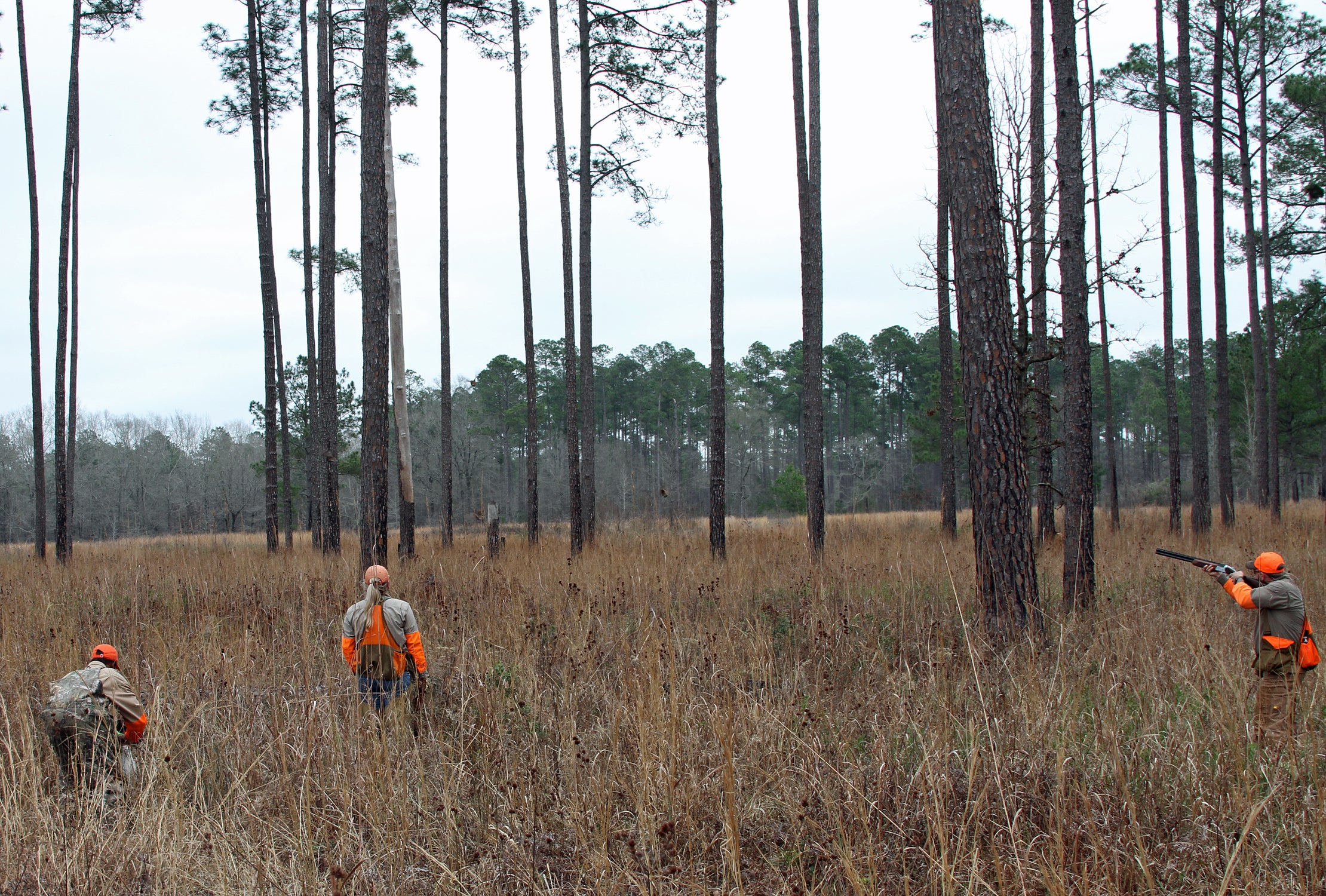By DAVID RAINER, Alabama Department of Conservation and Natural Resources
The bobwhite quail opportunities in the Alabama Black Belt were put under intense scrutiny recently. As expected, the Black Belt quail experience received nothing but praise.
Alabama Black Belt Adventures and sponsors hosted representatives of Quail Forever and the outdoors media for a grand tour of the quail hunting in the Alabama area famous for its rich, dark topsoil and abundant wildlife.
The tour started at Shenandoah Plantation in Union Springs, followed by a day of hunting at High Log Creek Farm and Hunting Preserve near Hurtsboro. Great Southern Outdoors Plantation in Union Springs entertained the group with dinner prepared by Iron Chef winner David Bancroft. Another award-winning chef, Chris Hastings, prepared one day’s lunch for the hunters at Gusto Plantation in Lowndes County. A trip to the Boggy Hollow Wildlife Management Area (WMA) in Conecuh National Forest was included in the tour.
Howard Vincent, president and CEO of Quail Forever and Pheasants Forever, said the programs he represents have three main purposes.
“We’re a habitat organization with three enduring strategies,” Vincent said. “We raise dollars, and we drive them in the ground. We do advocacy in Washington, D.C., typically on the Farm Bill. We are the face of the Conservation Reserve Program. And then we do education and outreach – how do we introduce more youth into the outdoors and shooting sports and hunting sports? How do we generate the next conservationists? That’s what we do every single day.
“The unique feature of Quail Forever and Pheasants Forever is the local chapters raise money, and then they retain control of that money. We just started a new chapter in Alabama, the Alabama Black Belt chapter in Union Springs. That makes six chapters in Alabama right now.”
Vincent and many of his Alabama excursion companions are based in Minnesota. Therefore, they enjoyed a break from the February cold up north and were treated to one of our main traditions.
“In Alabama, we learned that Southern hospitality is no cliché – it’s the absolute truth,” Vincent said. “Pam (Swanner of Alabama Black Belt Adventures) pulled all of this together. It was seamless. The Quail Forever team couldn’t be more proud to be down here to learn. We look forward to working together.”
To cap the week focused on Alabama quail, about 100 guests gathered at the Alabama Wildlife Federation (AWF) NaturePlex in Millbrook to hear a presentation by Bill Palmer of Tall Timbers Research Station in Tallahassee, Fla., where the bobwhite quail is one of the main focal points in its Game Bird Program.
Tim Gothard, AWF Executive Director, introduced Palmer and said interest in bobwhite quail restoration is as high as he has seen it in his 25 years in conservation.
“I don’t know that we have all the answers to make quail like they were in the 40s and 50s and 60s, but the interest in quail has really not waned,” Gothard said. “That is really the impetus for this event and the landowners we’ve talked with through the years. We knew that interest was still vibrant.”










